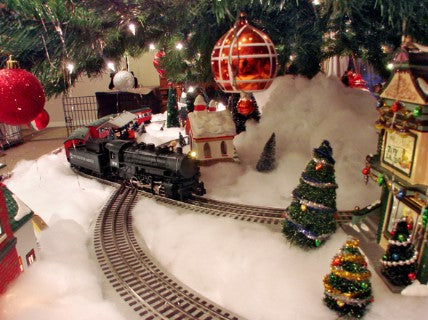If you’re looking at model trains and deciding what to prioritize, no doubt you’ve come across a variety of scales. You might be wondering, which scale is best for you? How small is too small?
The most common scales for train models and sets are O scale and HO scale. In this post, we’ll walk you through the differences and point you to the scale that’s right for you before you invest in a collection.

Are HO scale models compatible with O scale pieces?
The simple answer is, no. HO and O are completely different scales. HO is 1:87, while O scale is 1:48. As HO scale is approximately half the size of O scale, that means models, accessories, and even scenery and props will be vastly disproportionate between the two scales.

Photo: National Model Railroad Association
If you’re just starting out your collection or thinking of expanding, it’s best to know which scale you will be targeting so that you can focus on completing the full collection or setup you’re looking for.
Which scale has the best selection of products?

While “best” is certainly subjective, HO scale is the most popular scale for model trains. There is a larger selection of accessories and sets for HO scale, and by a wide margin. Check out the huge collection of guides, resources, models, tools, and gear for HO scale trains at shop.trains.com.
What scale works best for my home or setup?
Simply put, HO scale is better for smaller spaces, while O scale is a larger commitment and requires more space.
Many vet eran hobbyists suggest a 4’x8’ central layout or an 8’x10’ wraparound setup, at minimum, for HO scale builds. O scale models require considerably more investment in order to take advantage of a track and proper build, although if you have limited space you can still create beautiful designs such as this Christmas tree centerpiece.
eran hobbyists suggest a 4’x8’ central layout or an 8’x10’ wraparound setup, at minimum, for HO scale builds. O scale models require considerably more investment in order to take advantage of a track and proper build, although if you have limited space you can still create beautiful designs such as this Christmas tree centerpiece.
However, garden railroading is an increasingly popular subset of the hobby for people who prefer to construct their model train builds outdoors. If you have access to an outdoor setting for your trains, the larger models and the existing structures and plants of a garden or even a wooded area can make for a satisfying, interactive build.
Which scale is easiest to use and assemble?
Typically, HO scale is considered an easier entry point for beginners. With the plethora of tools, knowledge, and products available, it’s common sense to recommend HO. That said, it’s worth noting that O scale models tend to be significantly more durable and easier to manipulate due to their larger size.
For those who want to be more interactive with their builds, O scale may be worth considering. Classic sets include functional set pieces such as sawmills, lumber loaders, coal ramps, cattle loaders, milk platforms, and many more. The larger the scale, the more robust and capable the mechanisms can be.
If you want children to be able to play with your build rather than simply admire the aesthetics, O scale may be right for you.
Which scale is more realistic – O scale or HO scale?
Compared to HO scale, O scale allows for more detail and realism in layouts. Many prefabricated dollhouses, for instance, are available at O scale, which can provide a variety of ready-made buildings and powered trackside accessory options for a build.
On the other hand, you may prefer the “realism” of an entirely functional train station or tracks that run through carefully crafted natural scenery, and you might have more space to construct such a scene using HO scale in a dedicated room or floor space.
While there are quality manufacturers that specialize in every size, including G, S, and N scales, it entirely depends on the era, style, and functionality you’re looking for.
Still need more help on where to start? Thankfully, the model train community is chock full of talented and helpful folks with years of experience. Join the Classic Toy Trains Forum and see what members are saying about their builds.
-Written by Matt Herr

